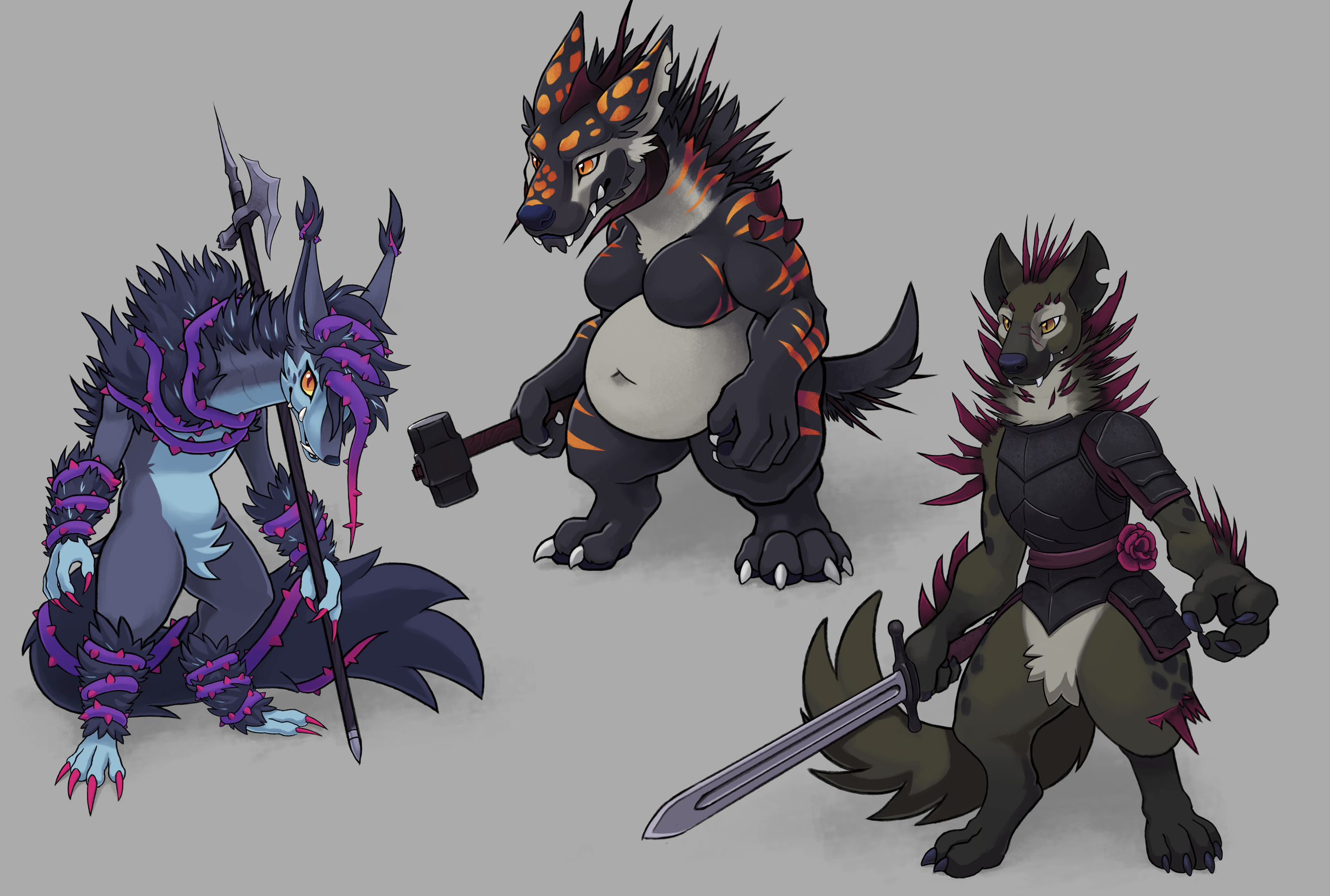
Overview
Bramblewolves are large bipedal canines covered in spikes.
General Physiology
Bramblewolves are fairly large, generally bipedal canines. They typically have a hunched posture, smaller legs, and broad shoulders, with longer, powerful arms. These traits allow them to walk or run comfortably on all fours, though they often prefer to stand. Bramblewolves are technically omnivorous, but are largely adapted to eating meat, which forms the bulk of their diet, and motivates a culture around hunting.
Blood Thorns
While most fur grows only from the follicle, Bramblewolf fur strands can be revitalized with blood, which causes the strands to grow and adhere to each other, forming cohesive keratin spikes. The blood can be from themselves of from other creatures. This forms a natural defense- if a Bramblewolf is injured, the fur around the injury will become spiky, protecting the area from further injury. Bramblewolves also take advantage of this trait intentionally- they will paint themselves with blood to selectively grow thorns, either strategically for combat, or as a form of fashion and ornamentation.
While the thorns are permanent in that fused fur stays fused, as the thorn grows out, they will become less solidly attached if the base furs are not fused by fresh application of blood.
The process of fusing is not instantaneous, but thoroughly saturated fur will fuse into a solid thorn in about a day's time.
Culture
Bramblewolves prefer to live closely with nature, and will often live completely wild, hunting with their claws and teeth. They are perfectly capable of sophistication, and will adopt the use of weapons tools, and clothes if their territory happens to overlap with a city or town, but bramblewolves tend to think of themselves (and everyone else) as animals, and they tend to not hold much respect for loftier cultural norms.